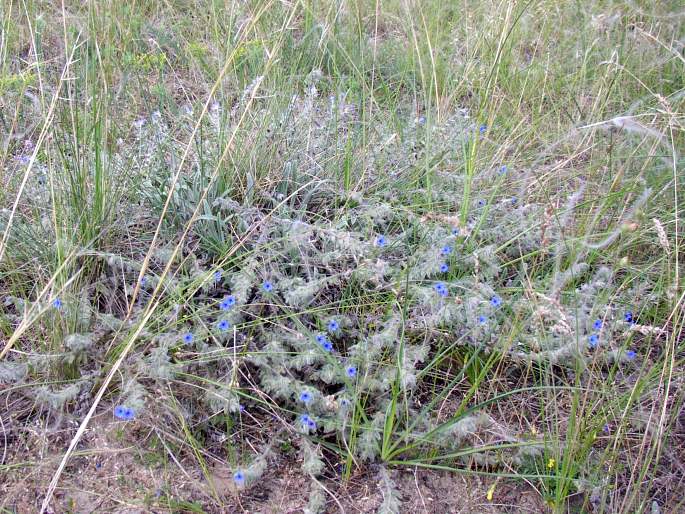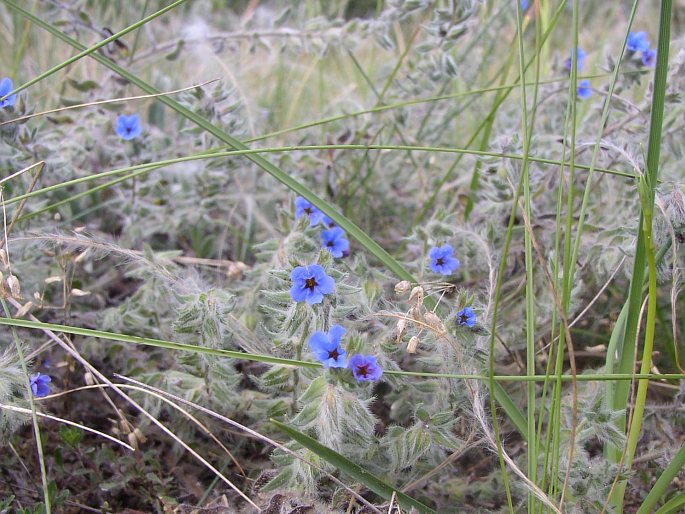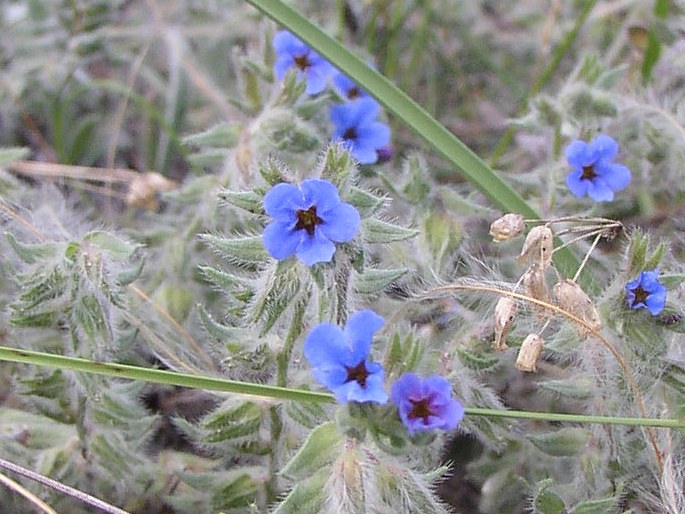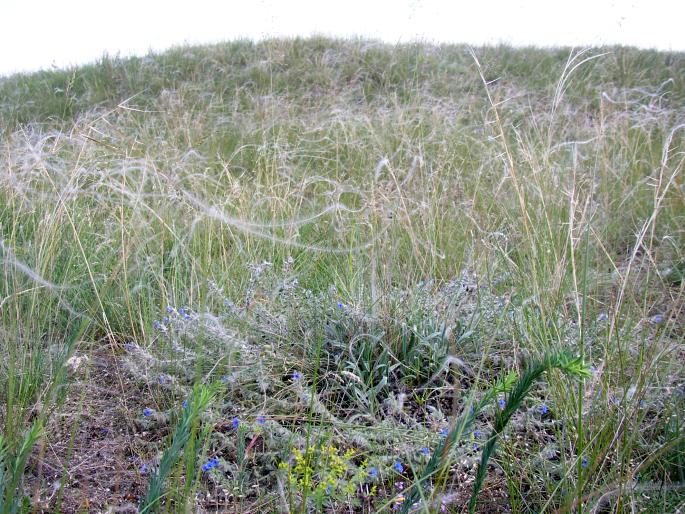Syn.: Anchusa tinctoria L., Anchusa pusztarum Borbás, Alkanna lehmannii (Tineo in Guss.) DC., Baphorhiza tinctoria (L.) Link, Buglossum tinctorium Lam., Lithospermum tinctorium L.
Family: Boraginaceae Juss.

Distribution: Mediterranean species, it extends into the southern part of central Europe – from Morocco and Spain through Italy, Tunisia and the Balkan Peninsula to Asia Minor, Israel and Jordan, northward to Hungary and southern Slovakia.
Ecology: It grows on sandy and rocky places. It blooms from May to June.
Description: Perennial herb, 10–20(–30) cm tall, setose-hispid. Stem procumbent or ascending, branched, eglandular. Basal leaves linear-lanceolate, 6–15 cm long and 7–15 mm wide, cauline leaves alternate, sessile, oblong-linear, cordate at base. Flowers in terminal, bracteate cymes; bracts not or slightly longer than calyx, oblong-lanceolate; calyx lobed almost to the base, 4–6 mm long; corolla with more or less cylindrical tube and limb, blue, glabrous outside, tube as long as or slightly longer than calyx, limb 6–8 mm in diameter. The fruits are nutlets, 2 mm in diameter.
Threat and protection: The Dyer’s Alkanet is protected by law in Slovakia, Hungary and Serbia.
Use: This plant has been used in the dyeing of textiles, and as colorant in food and cosmetics.



These images were taken in Slovakia, Čenkov (June 12, 2004).


